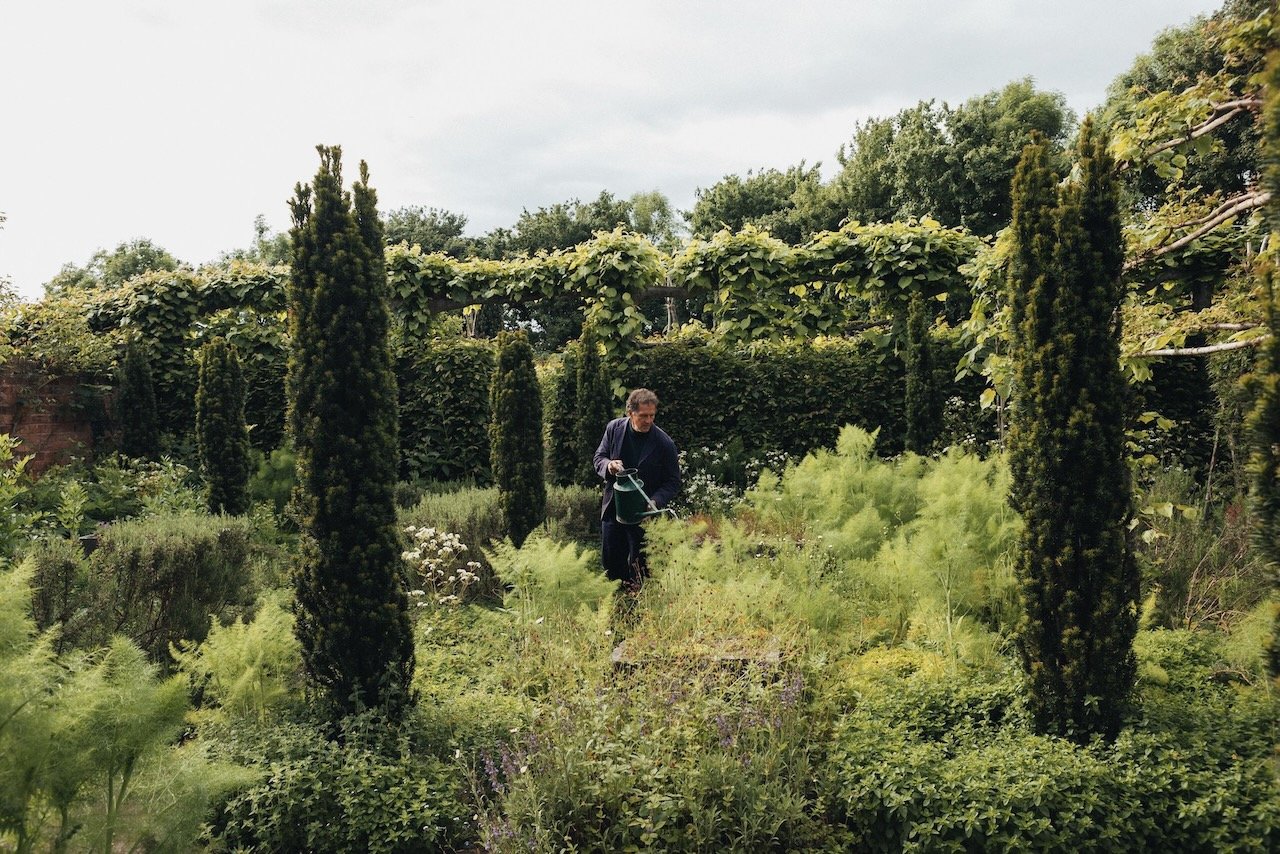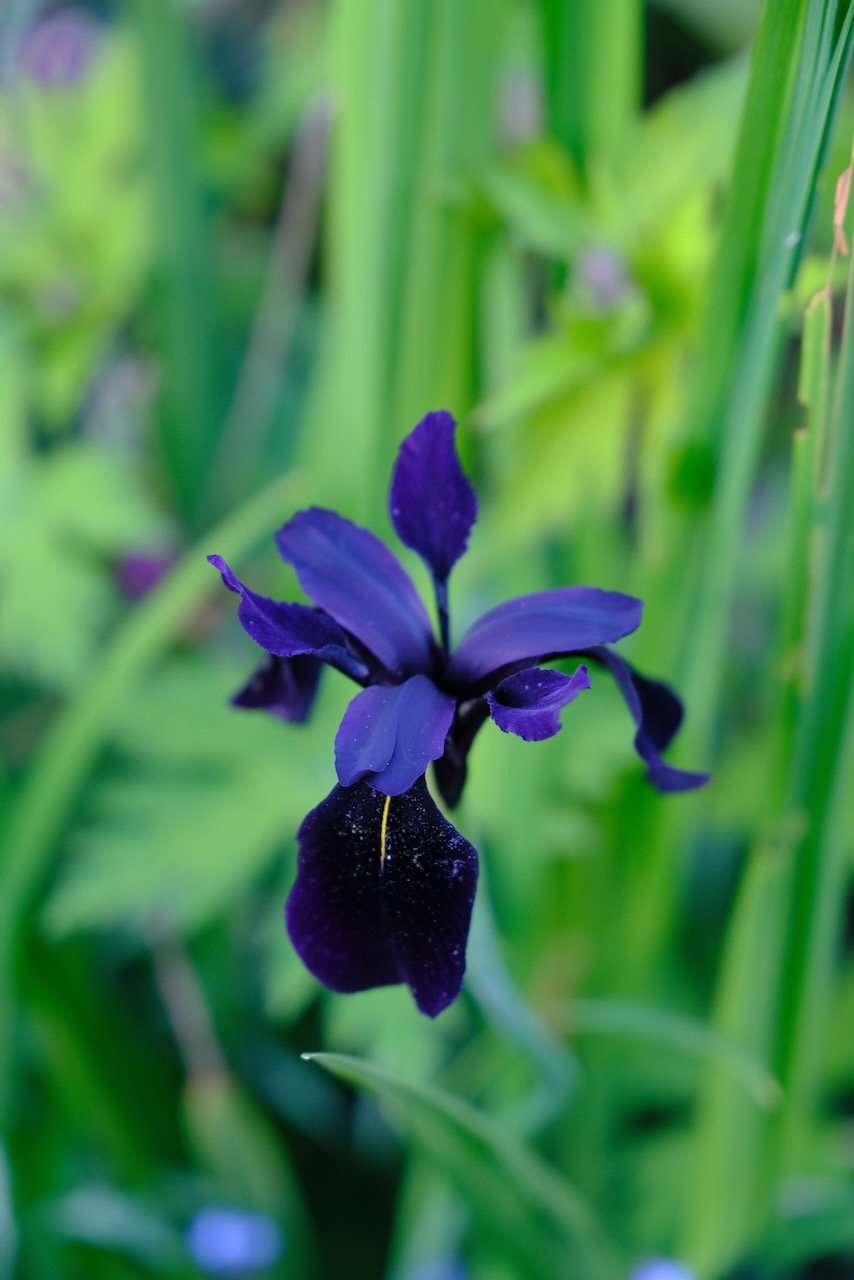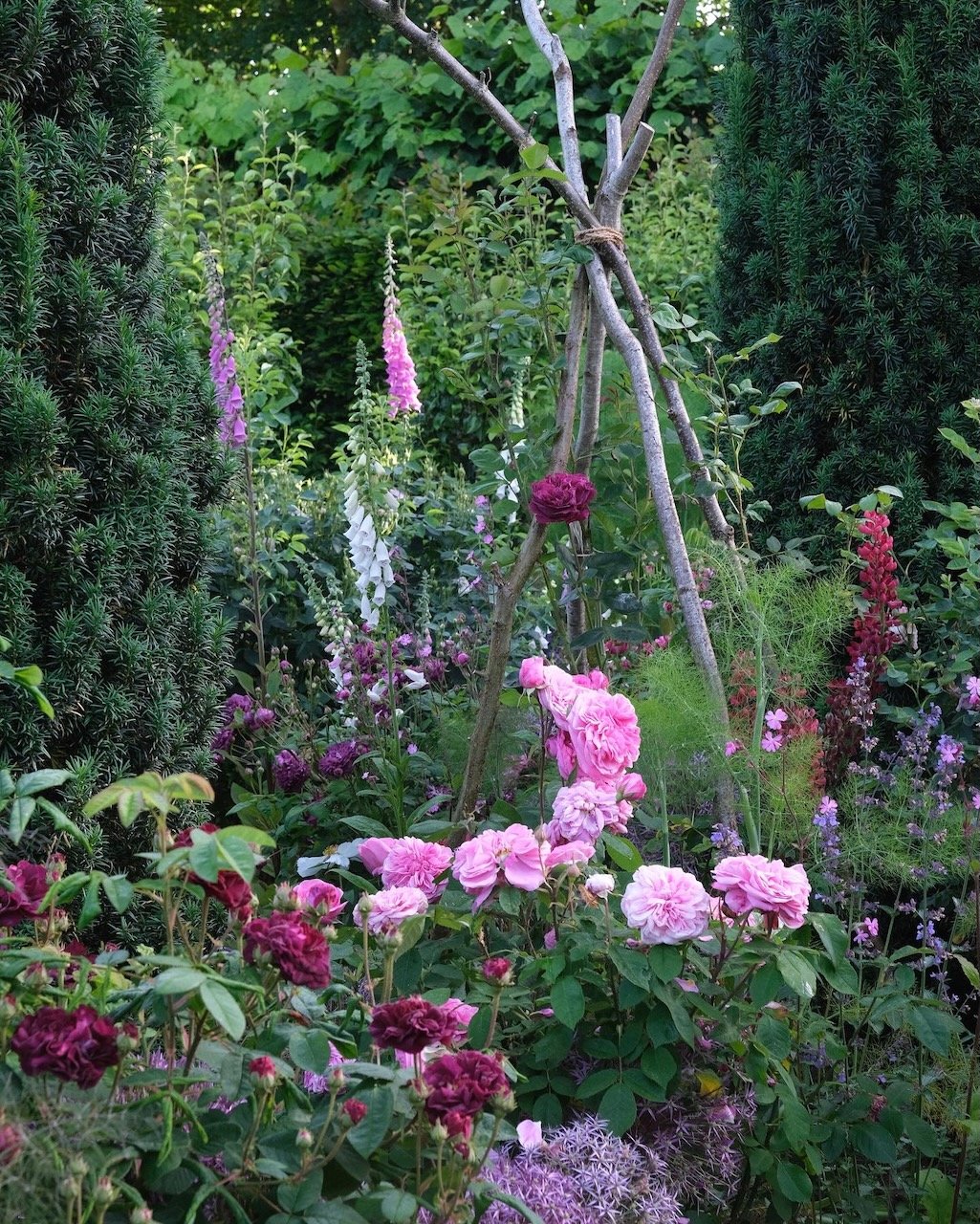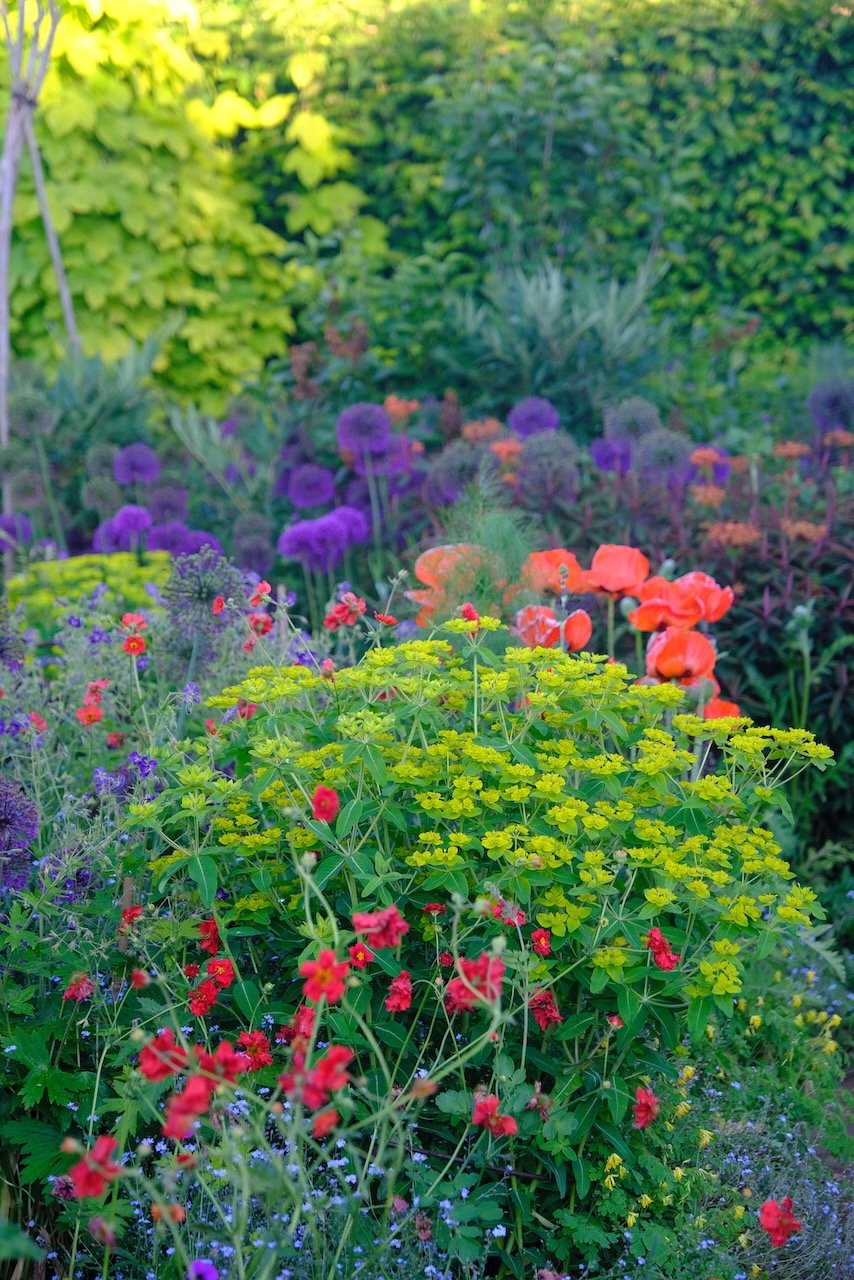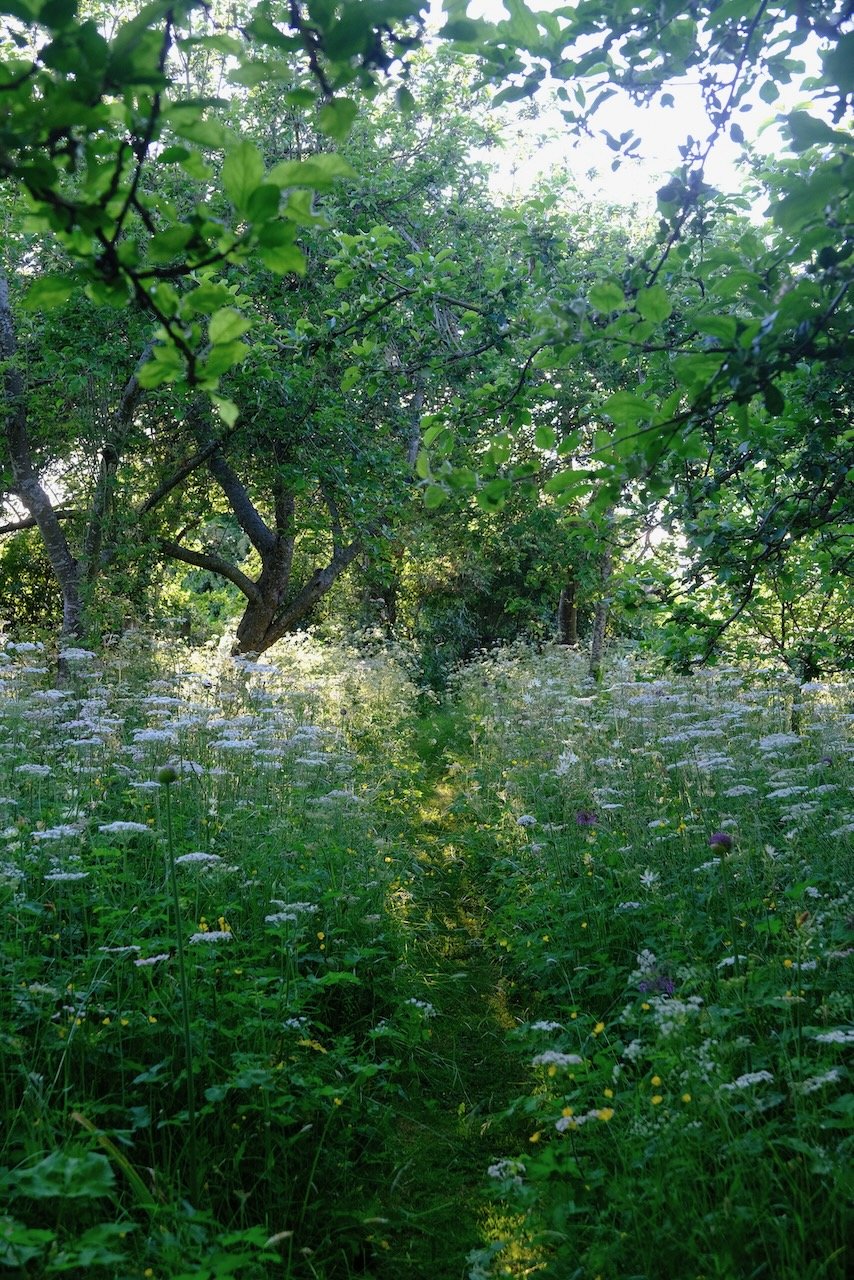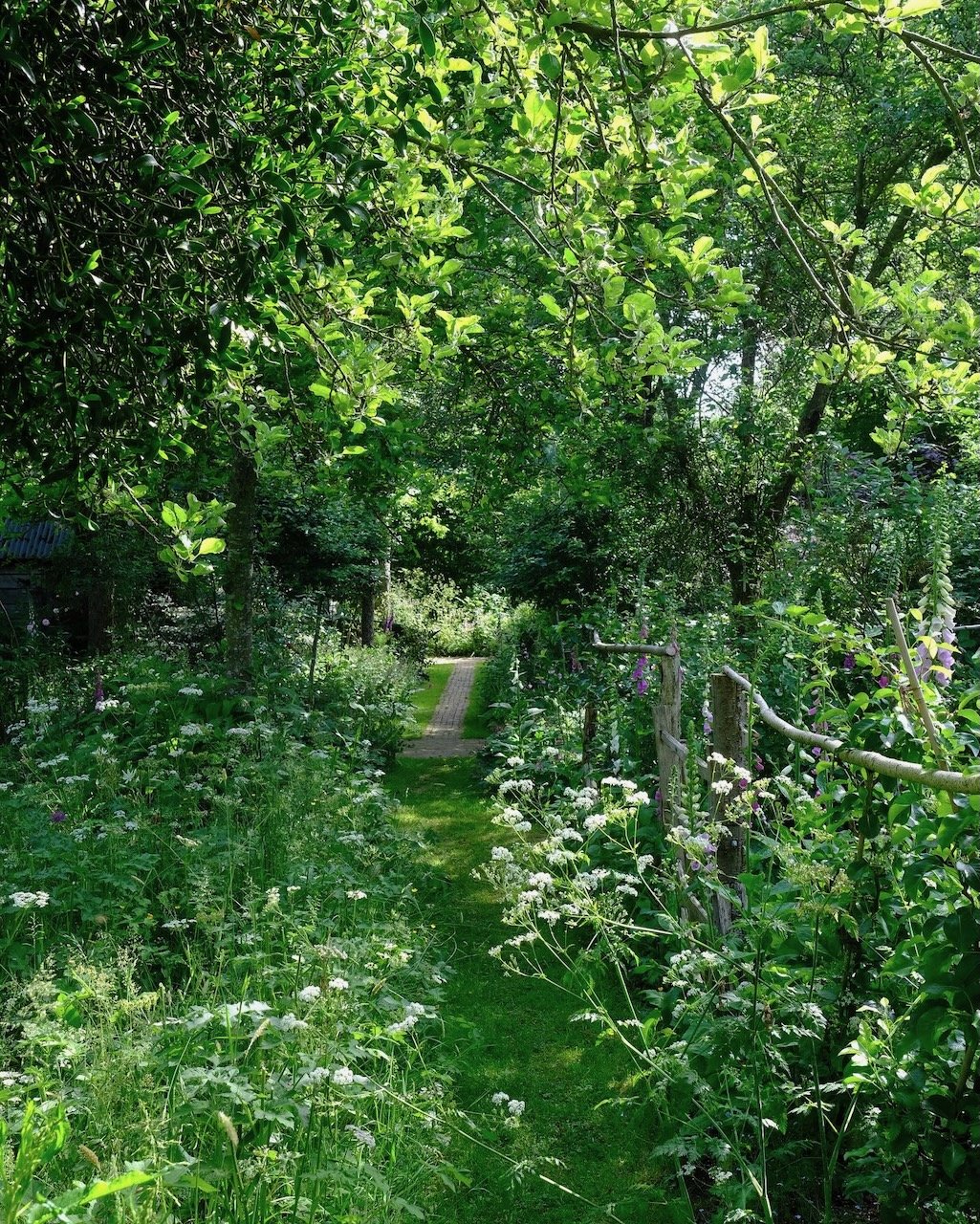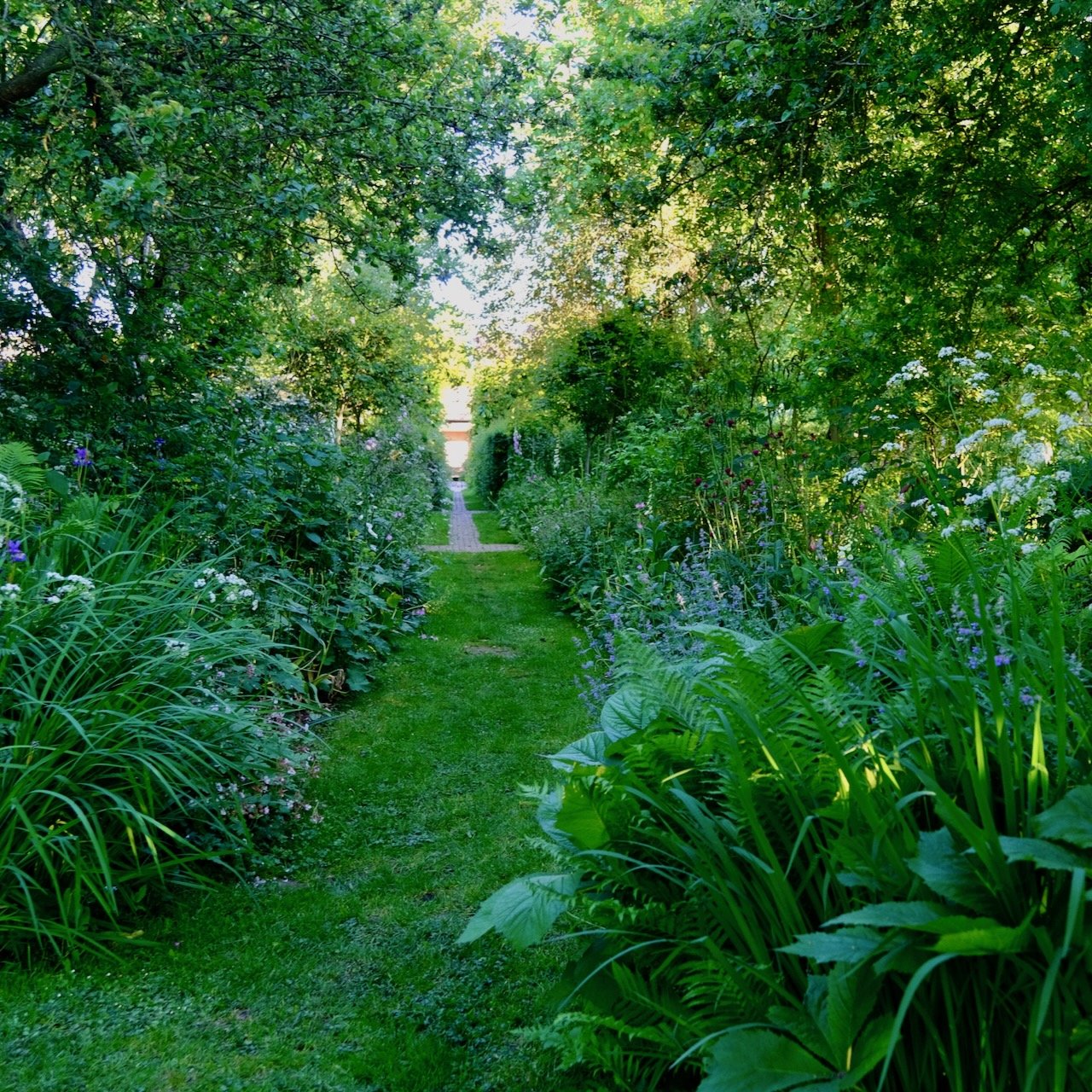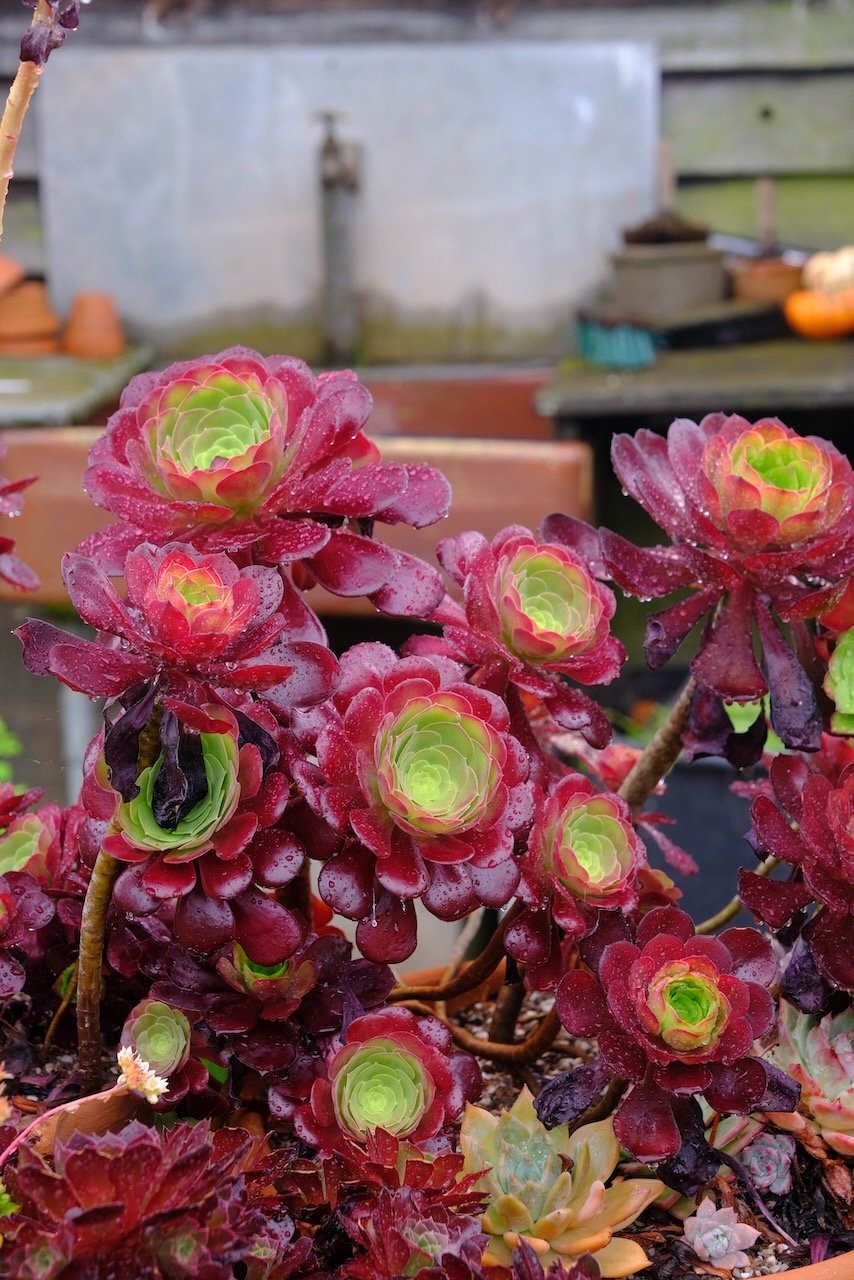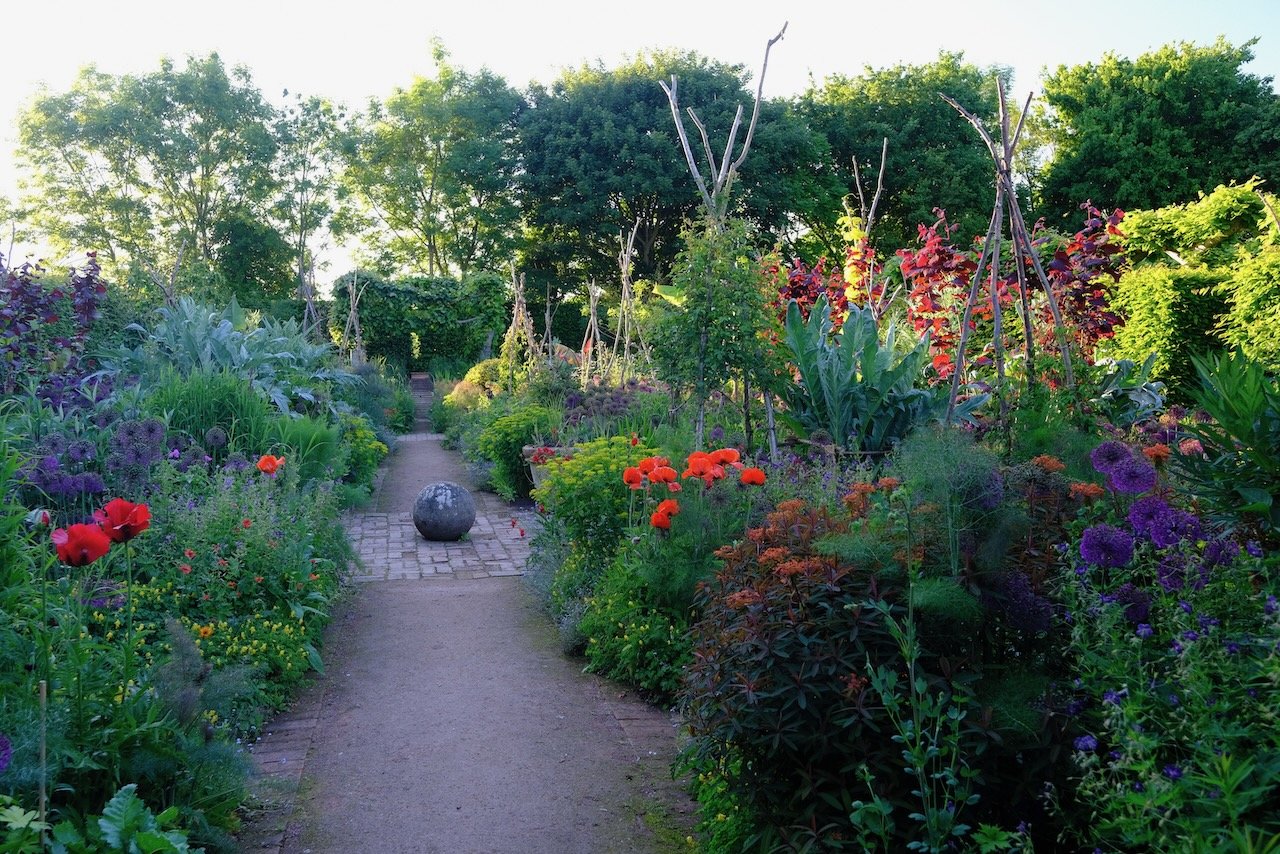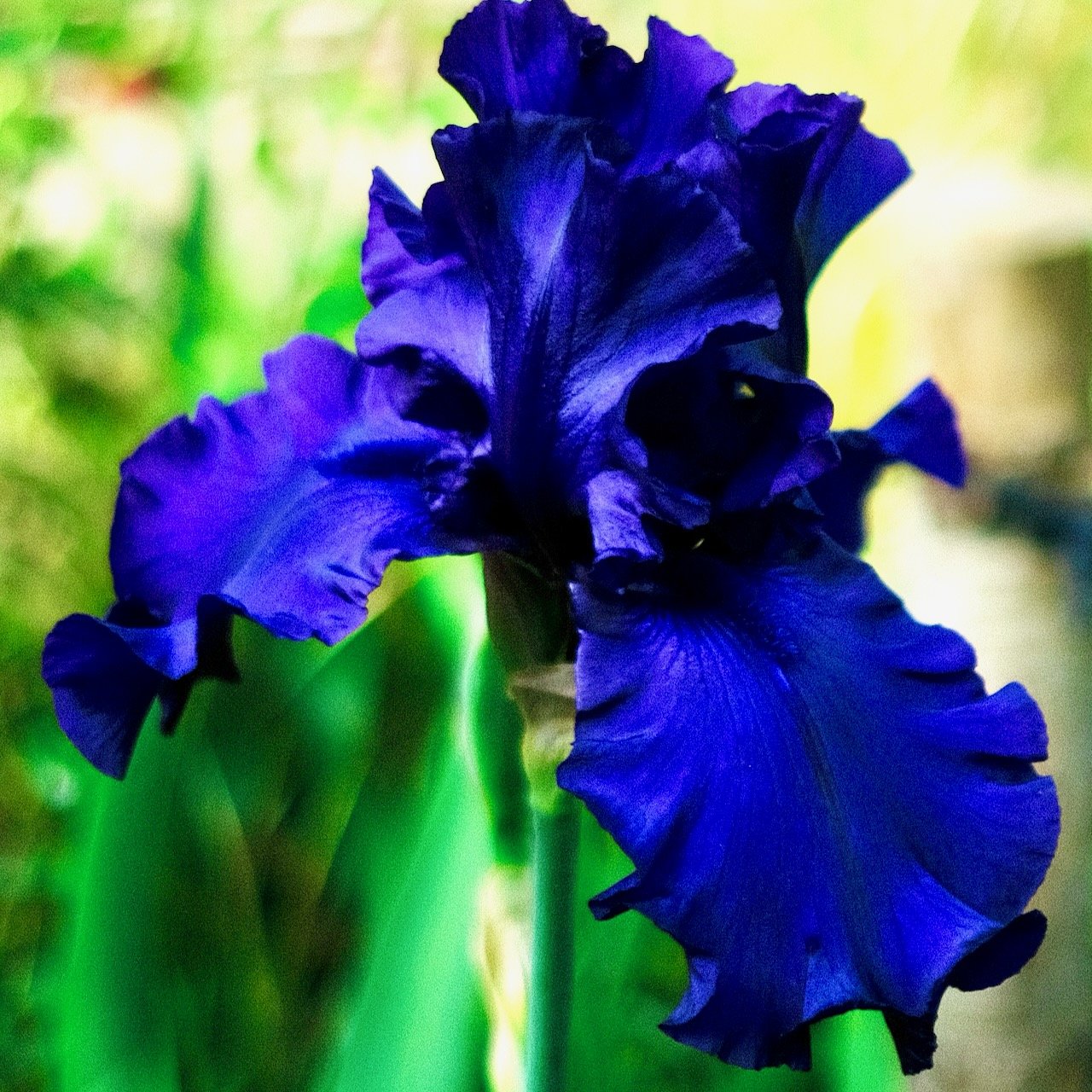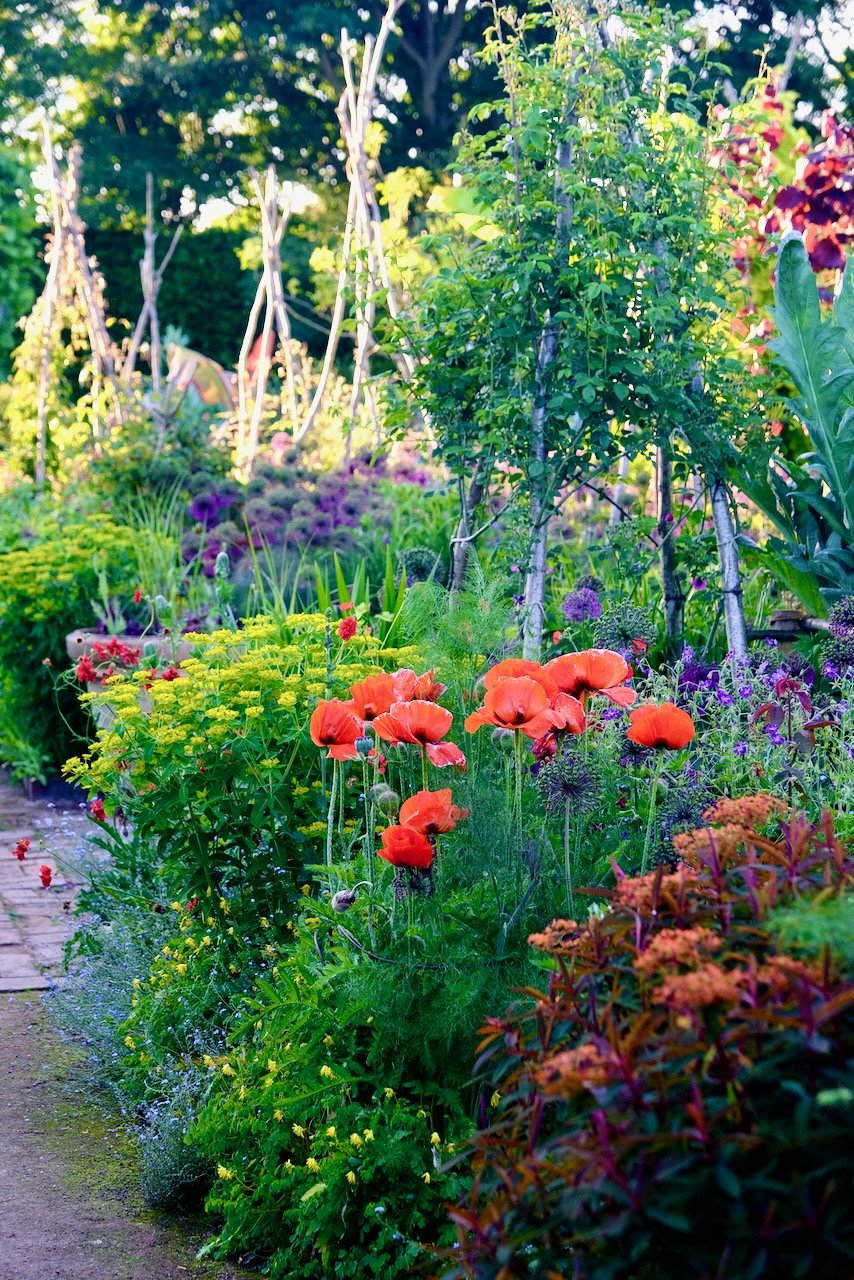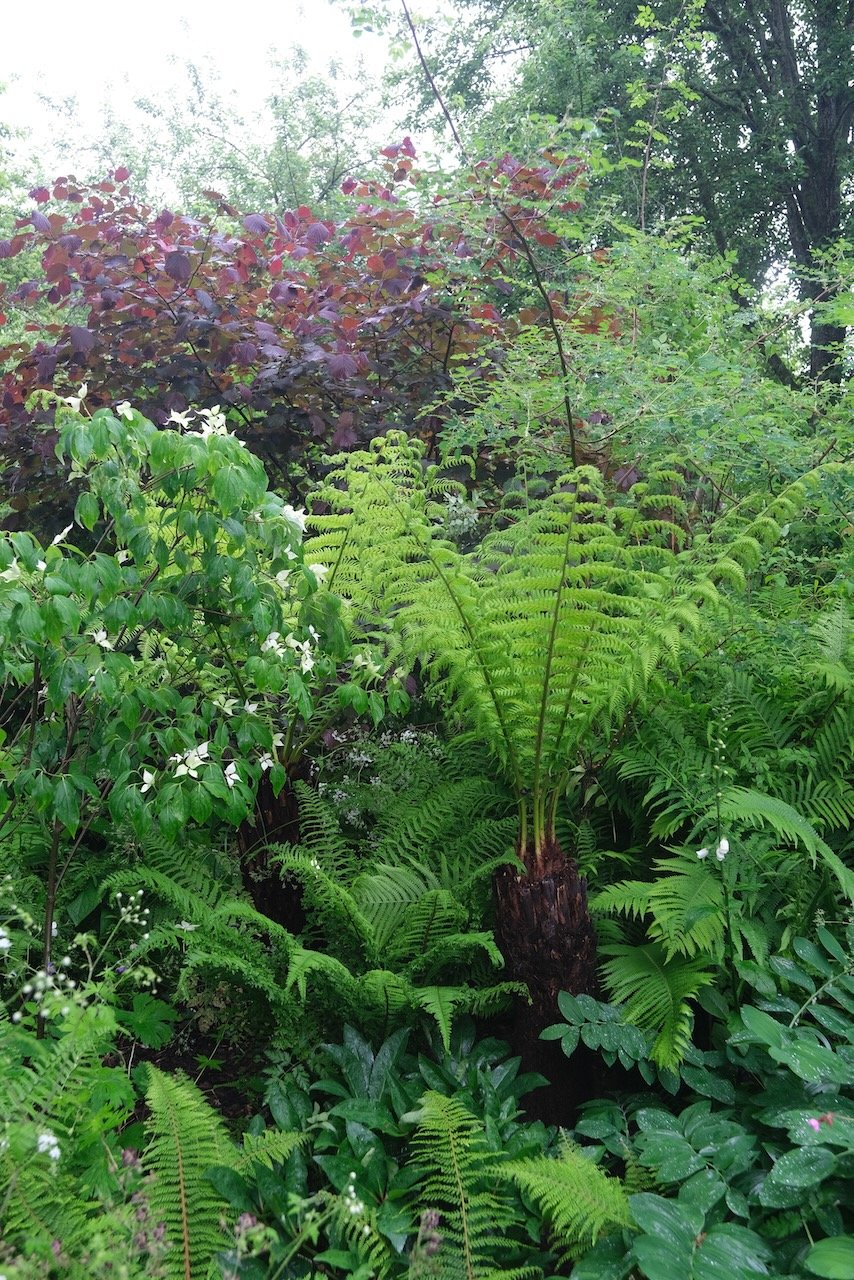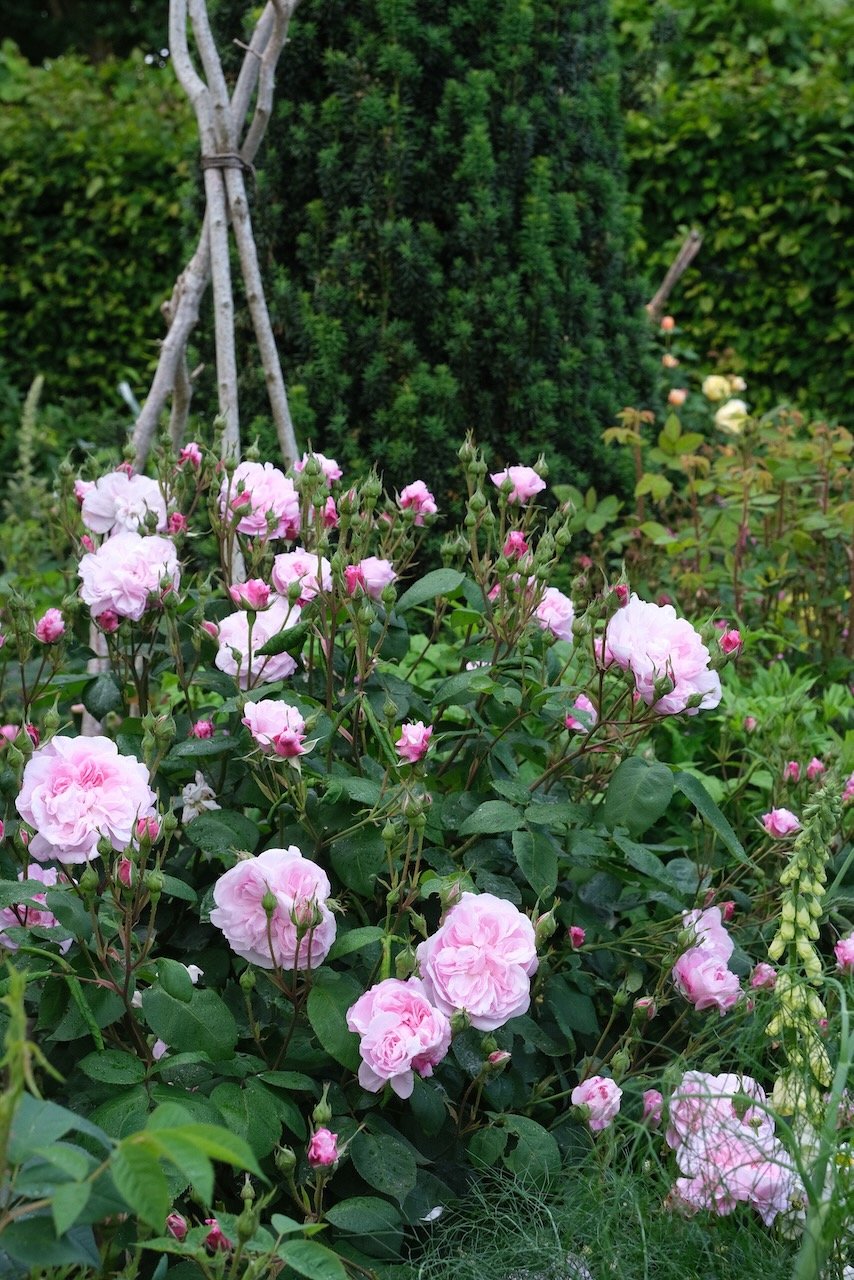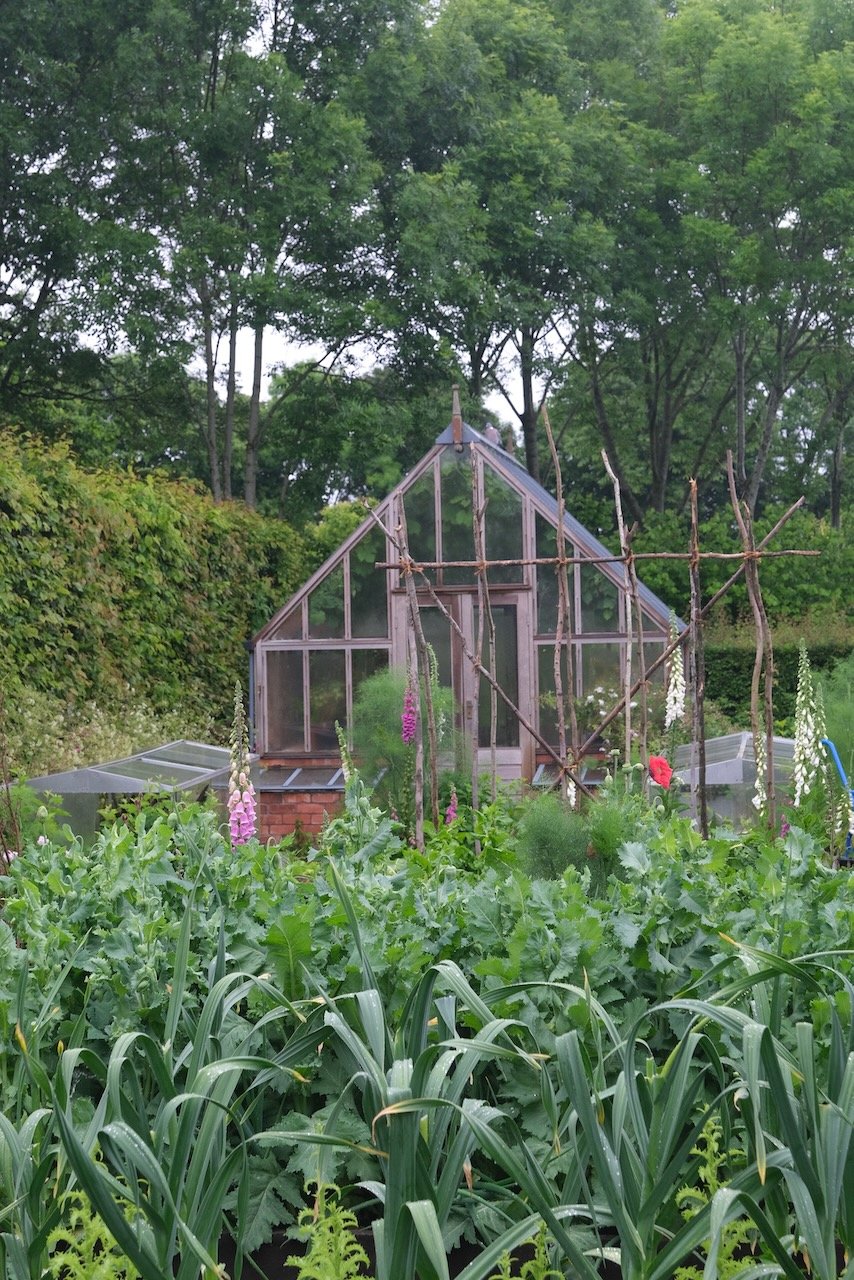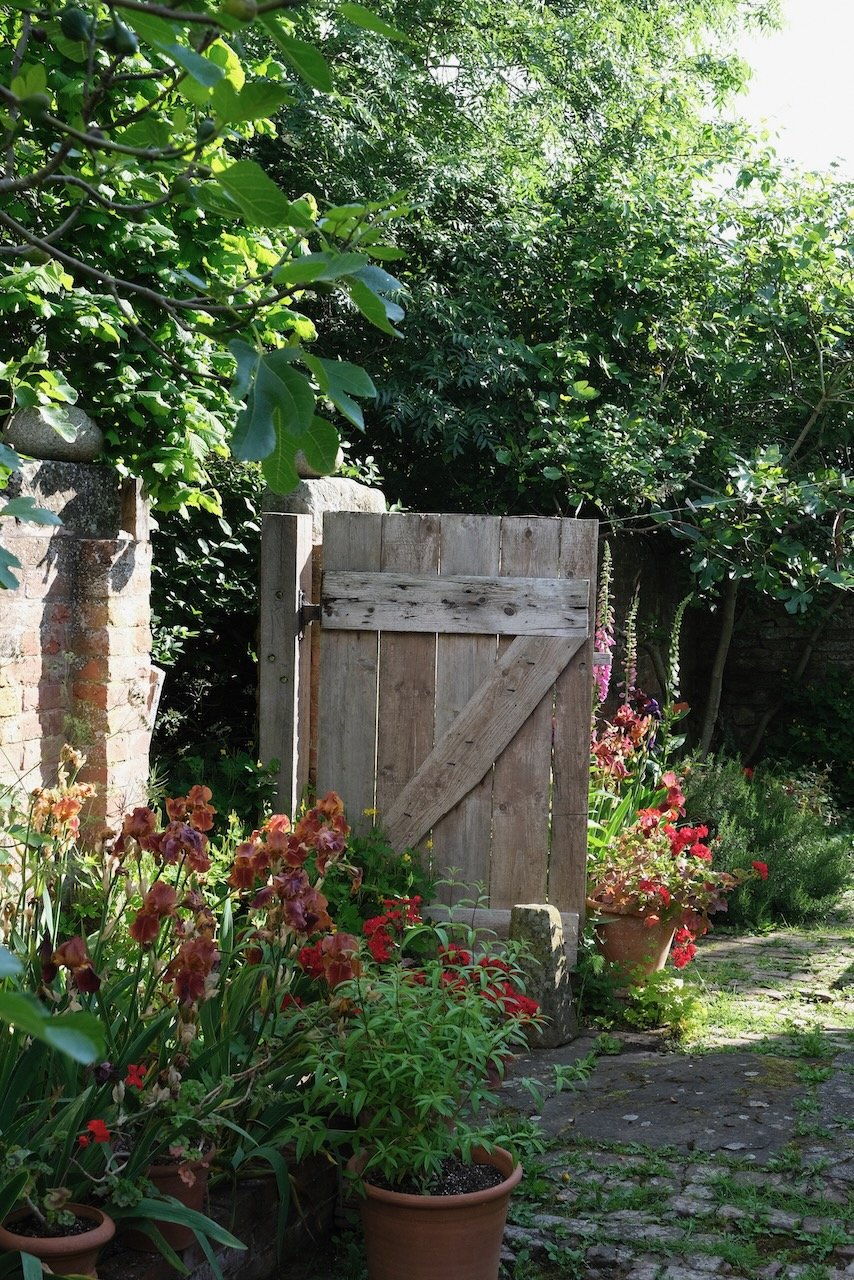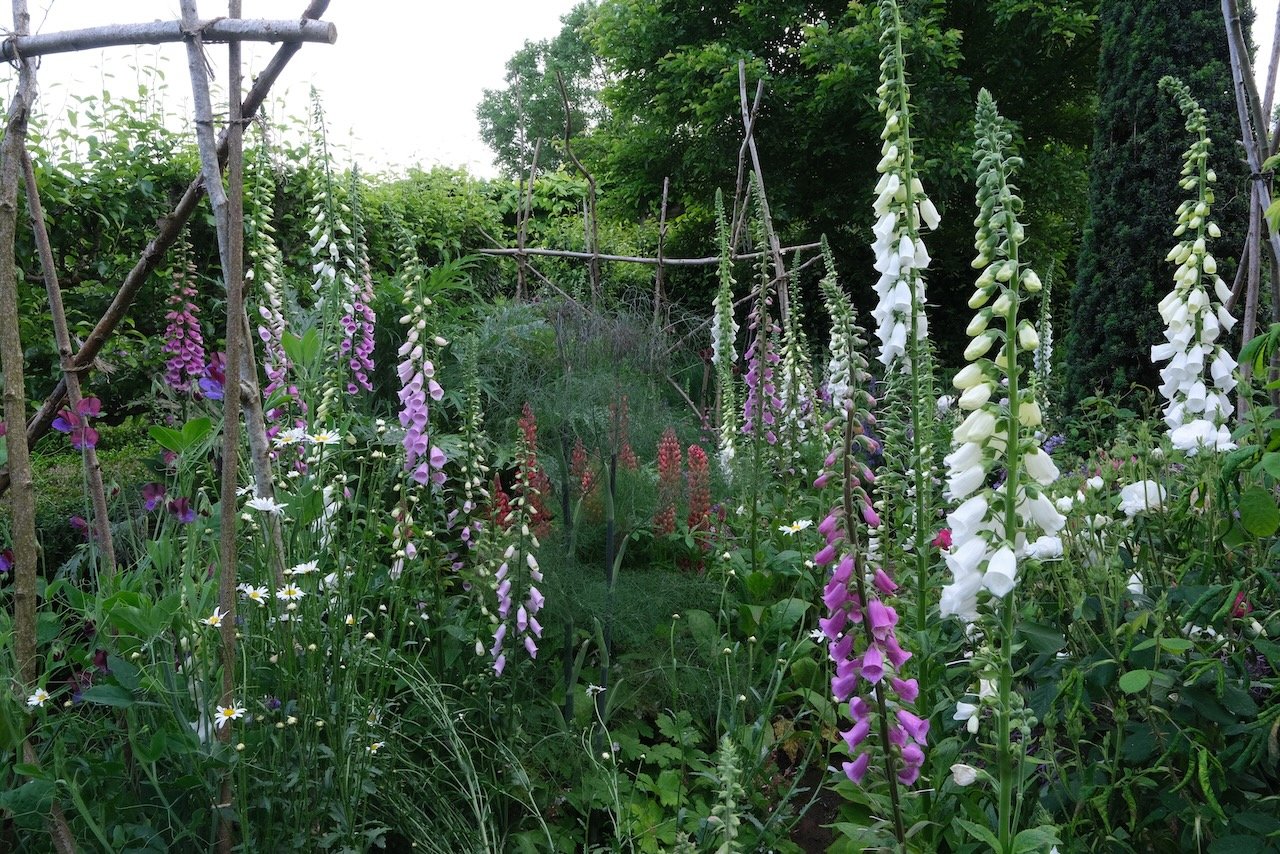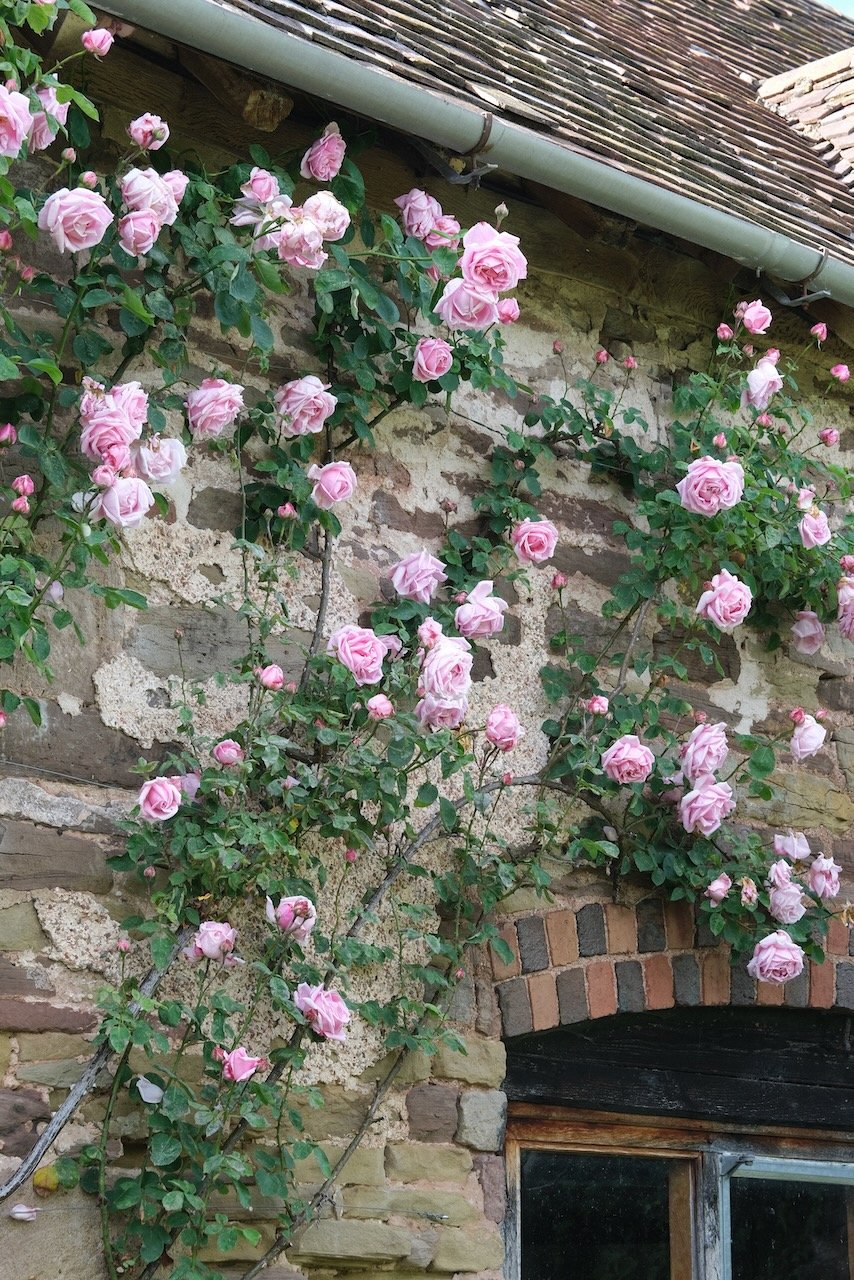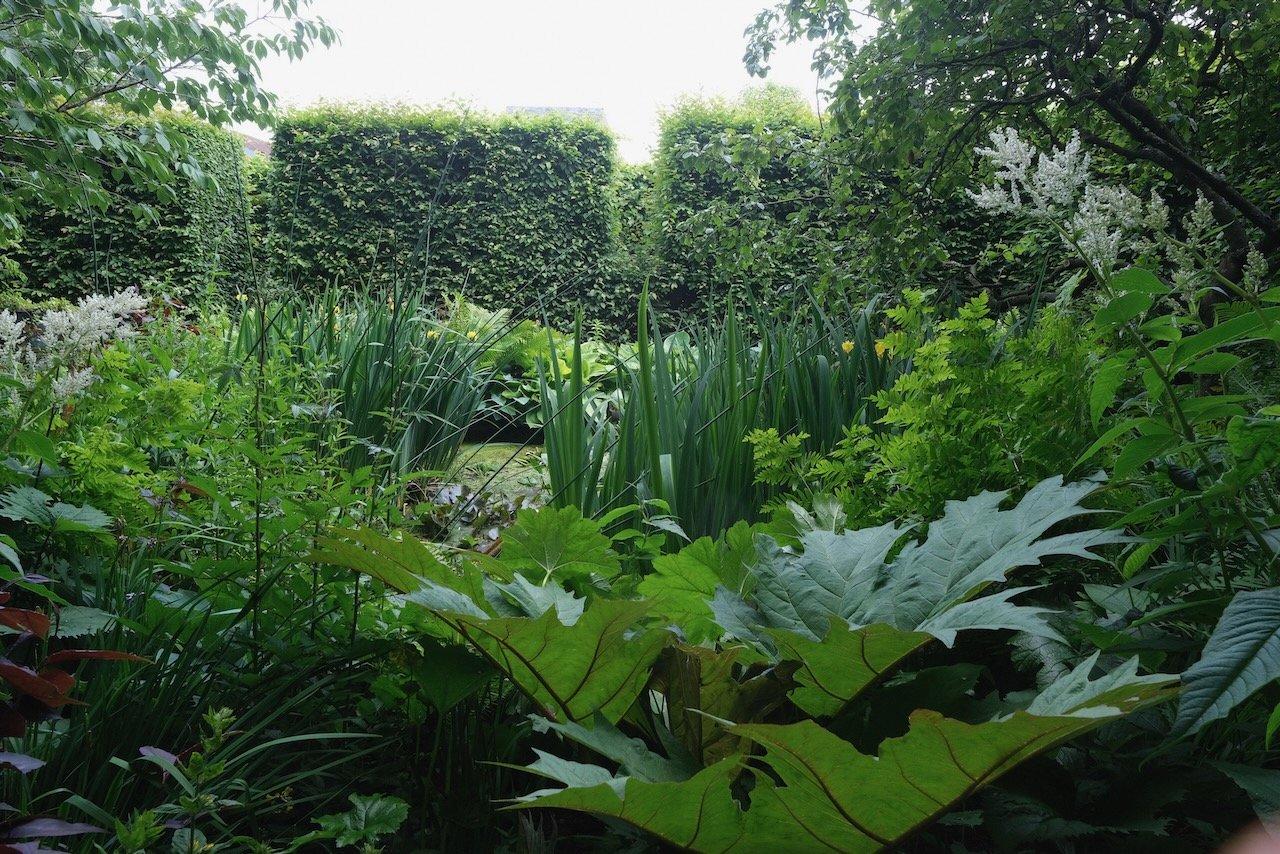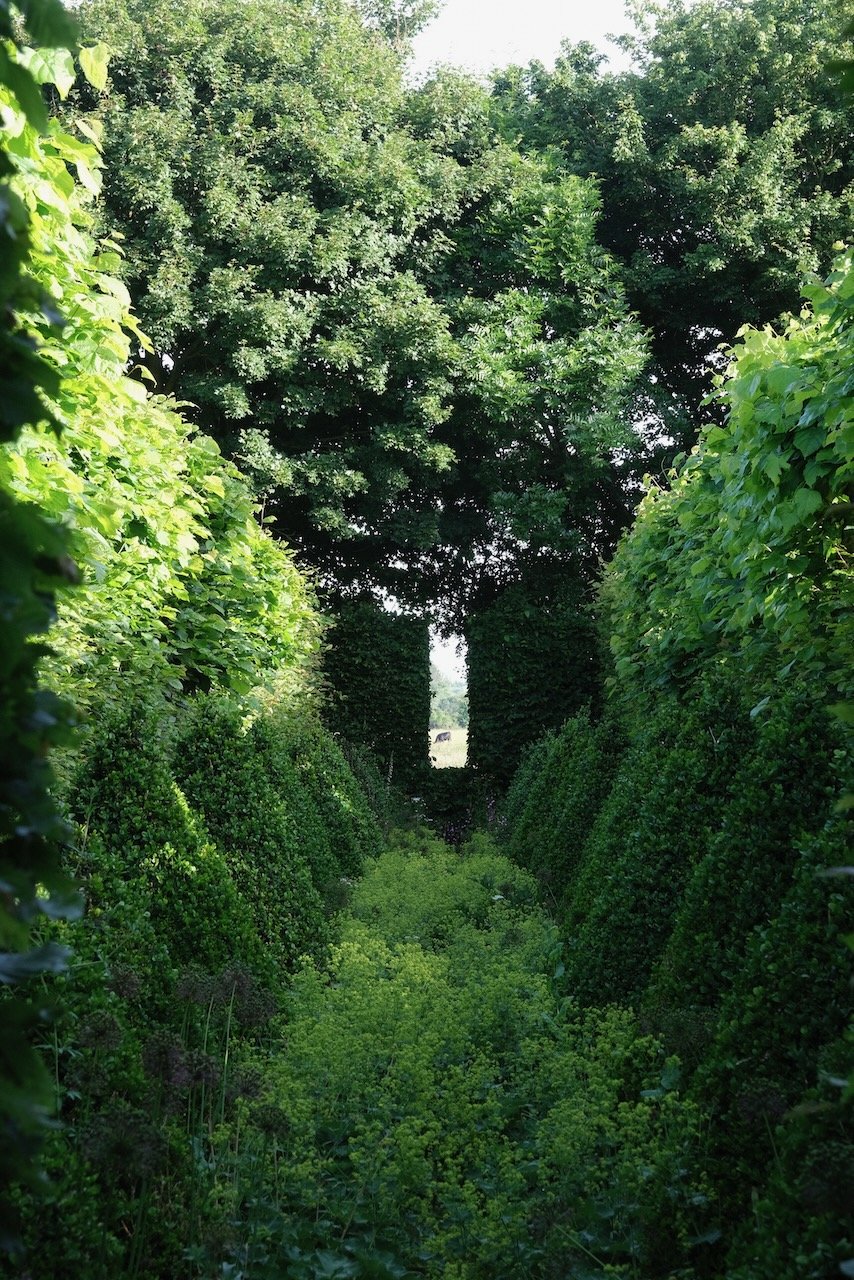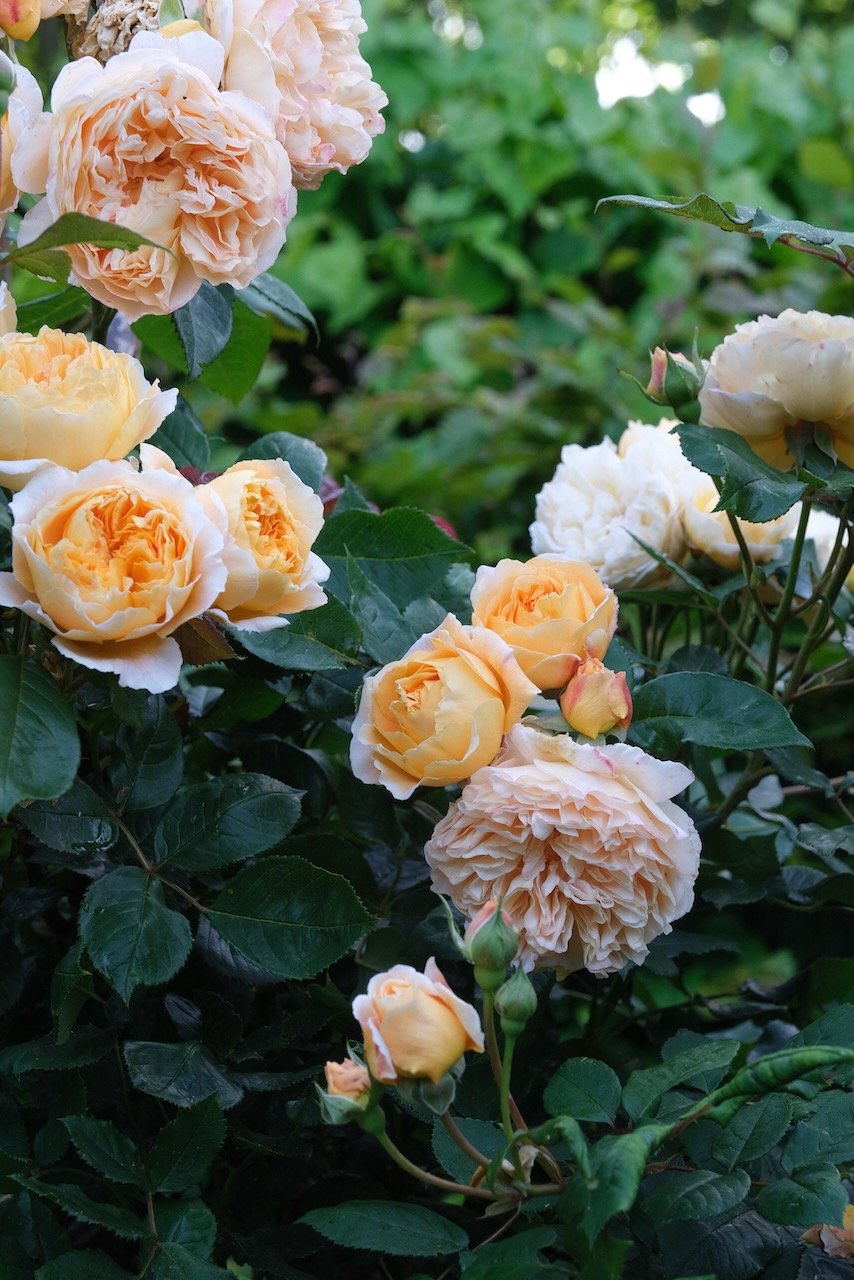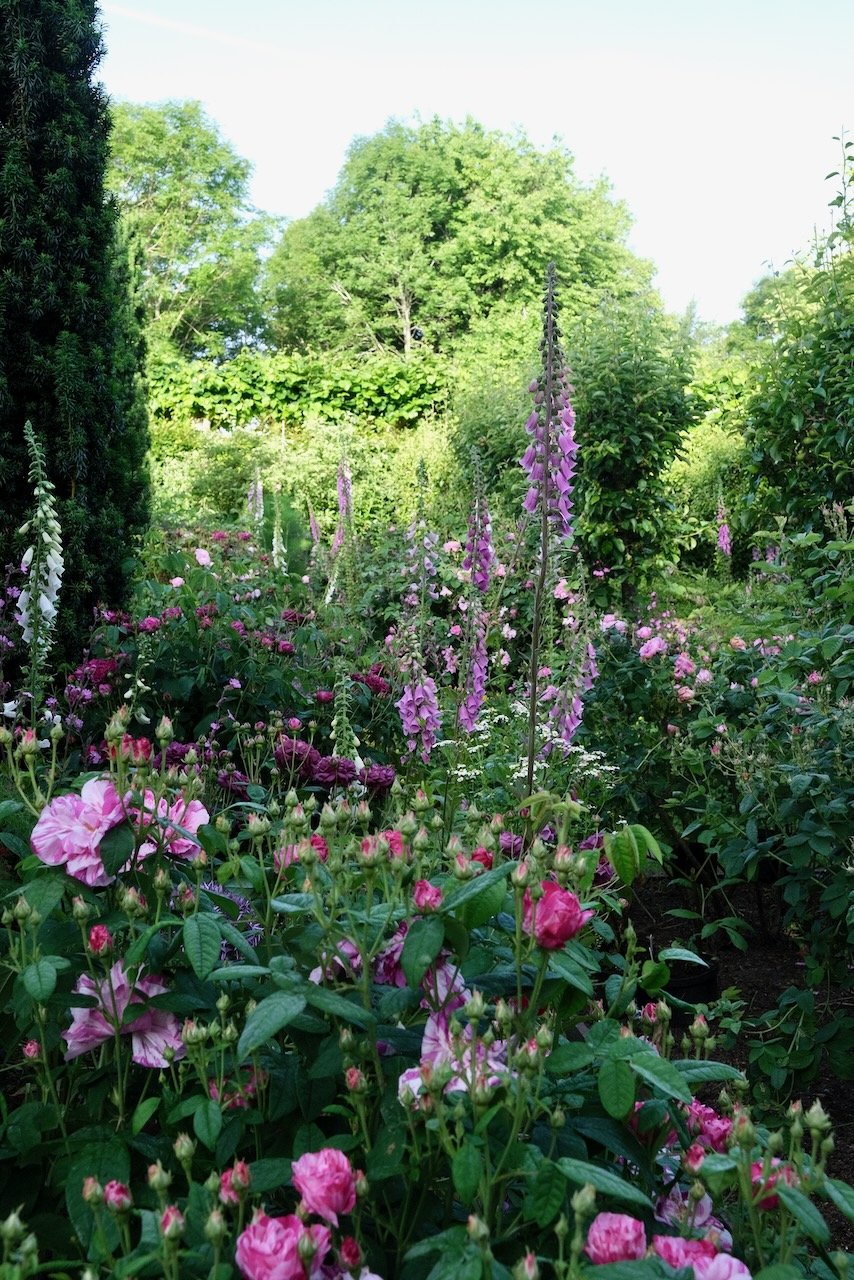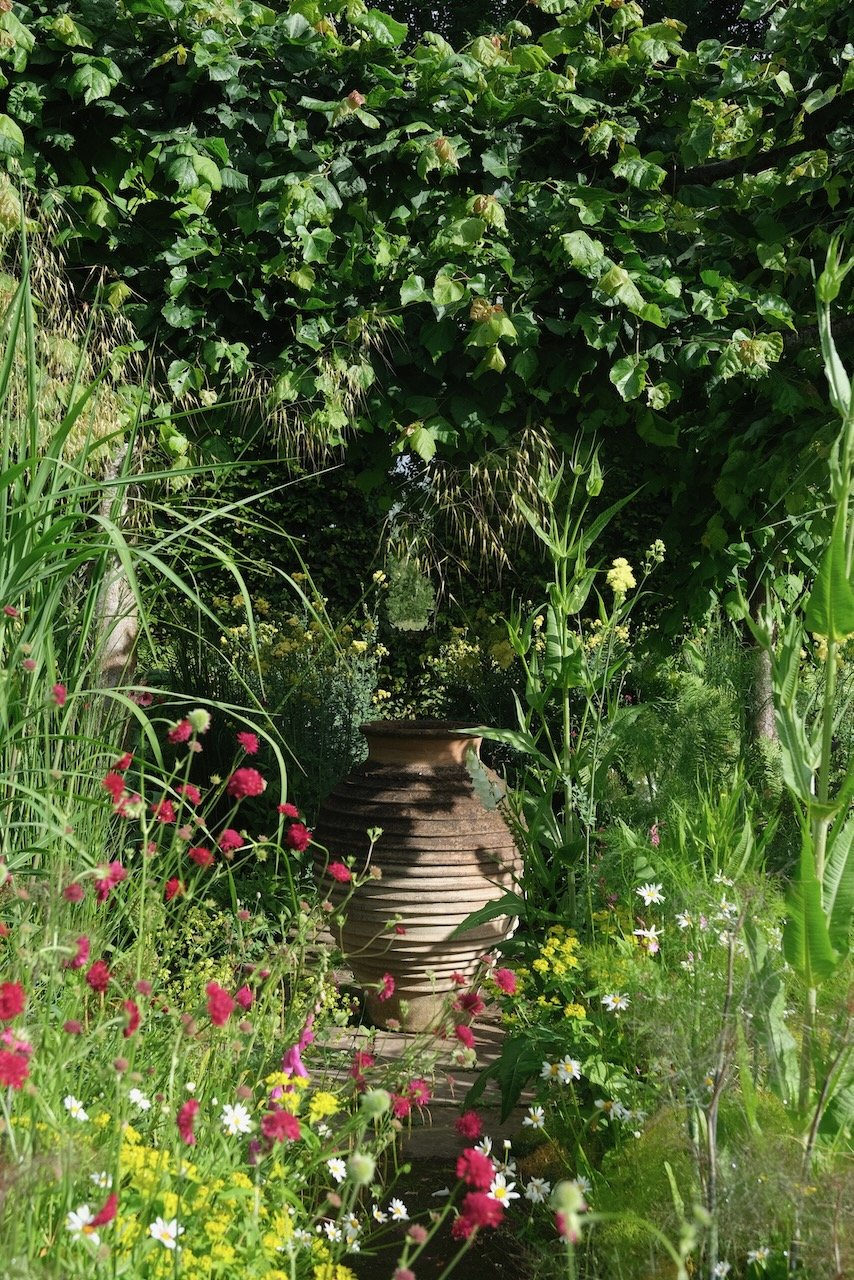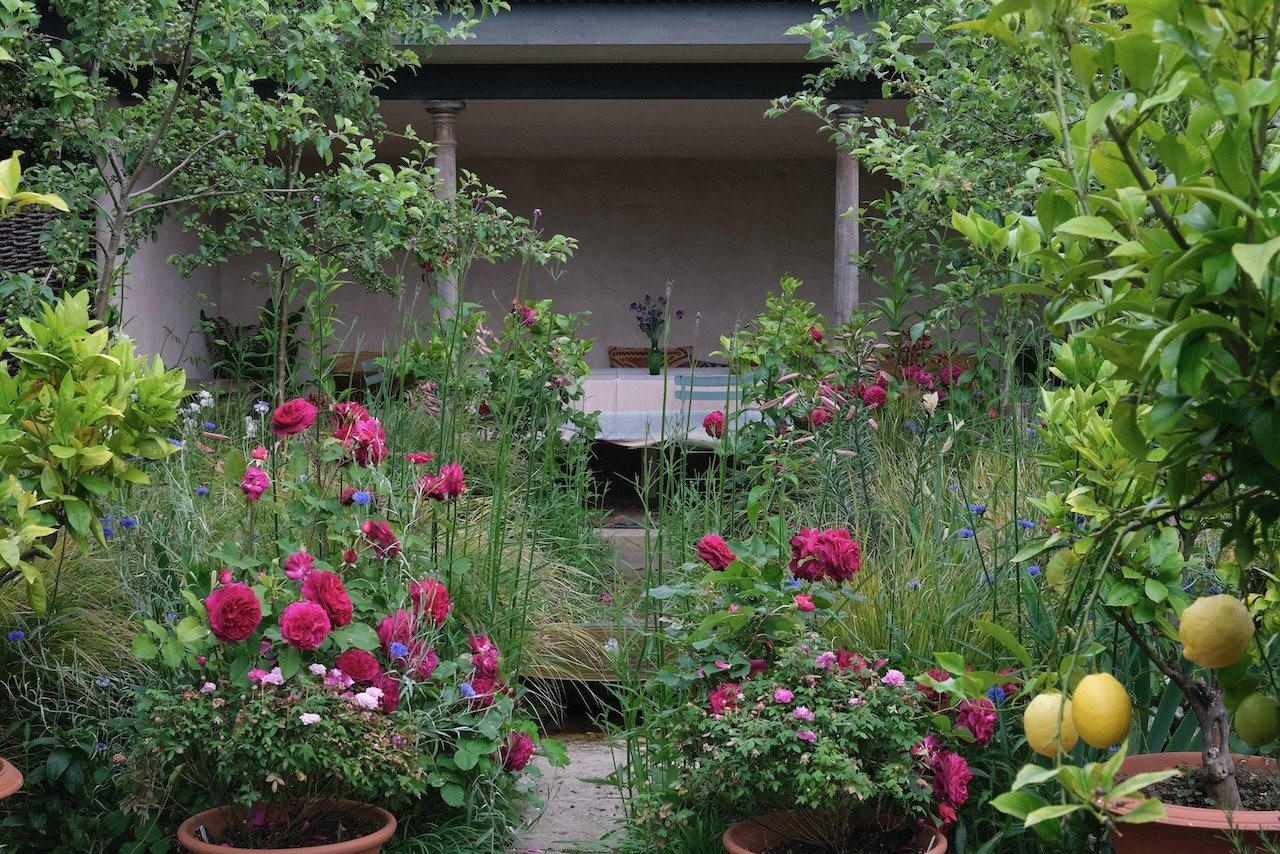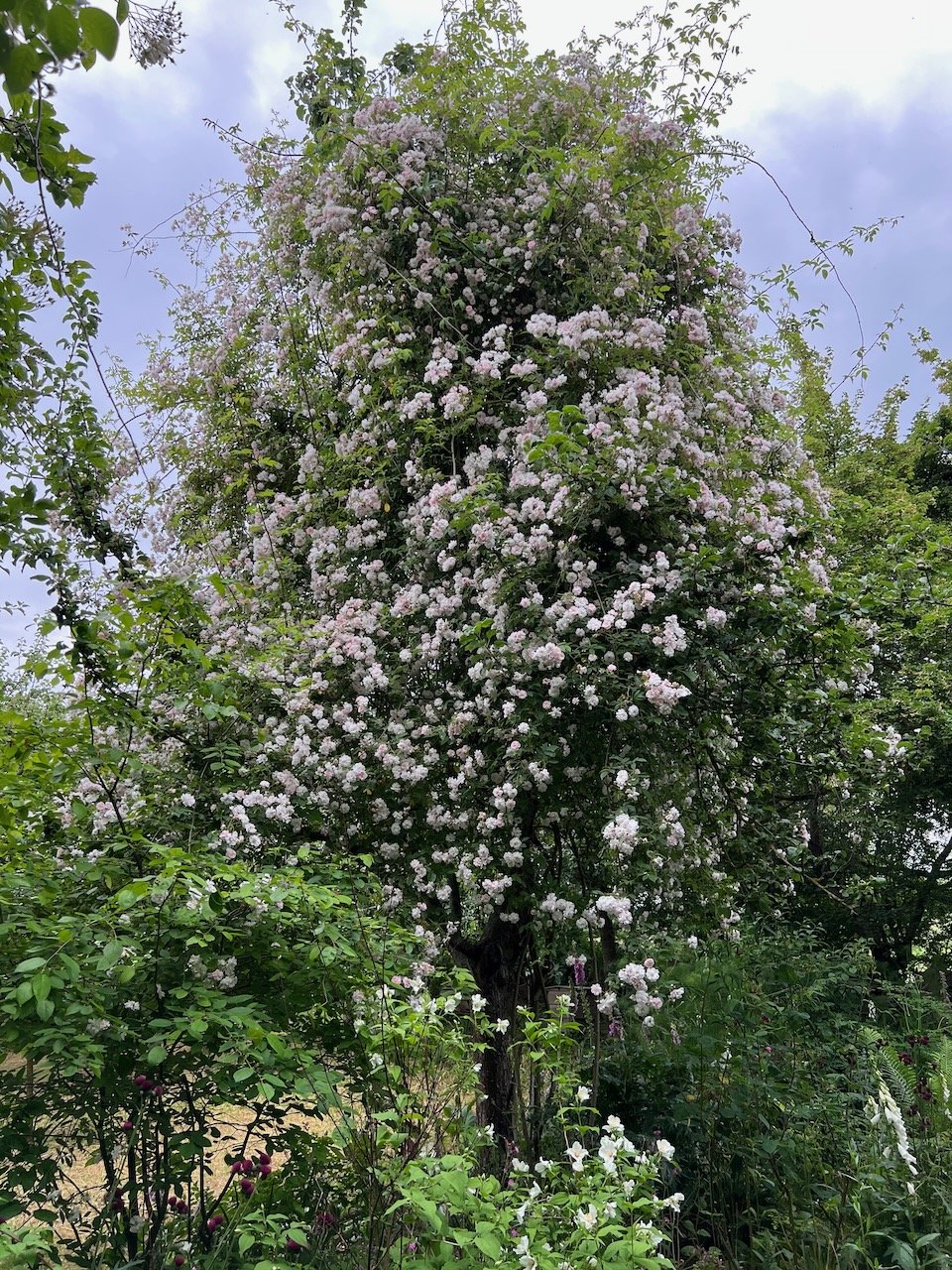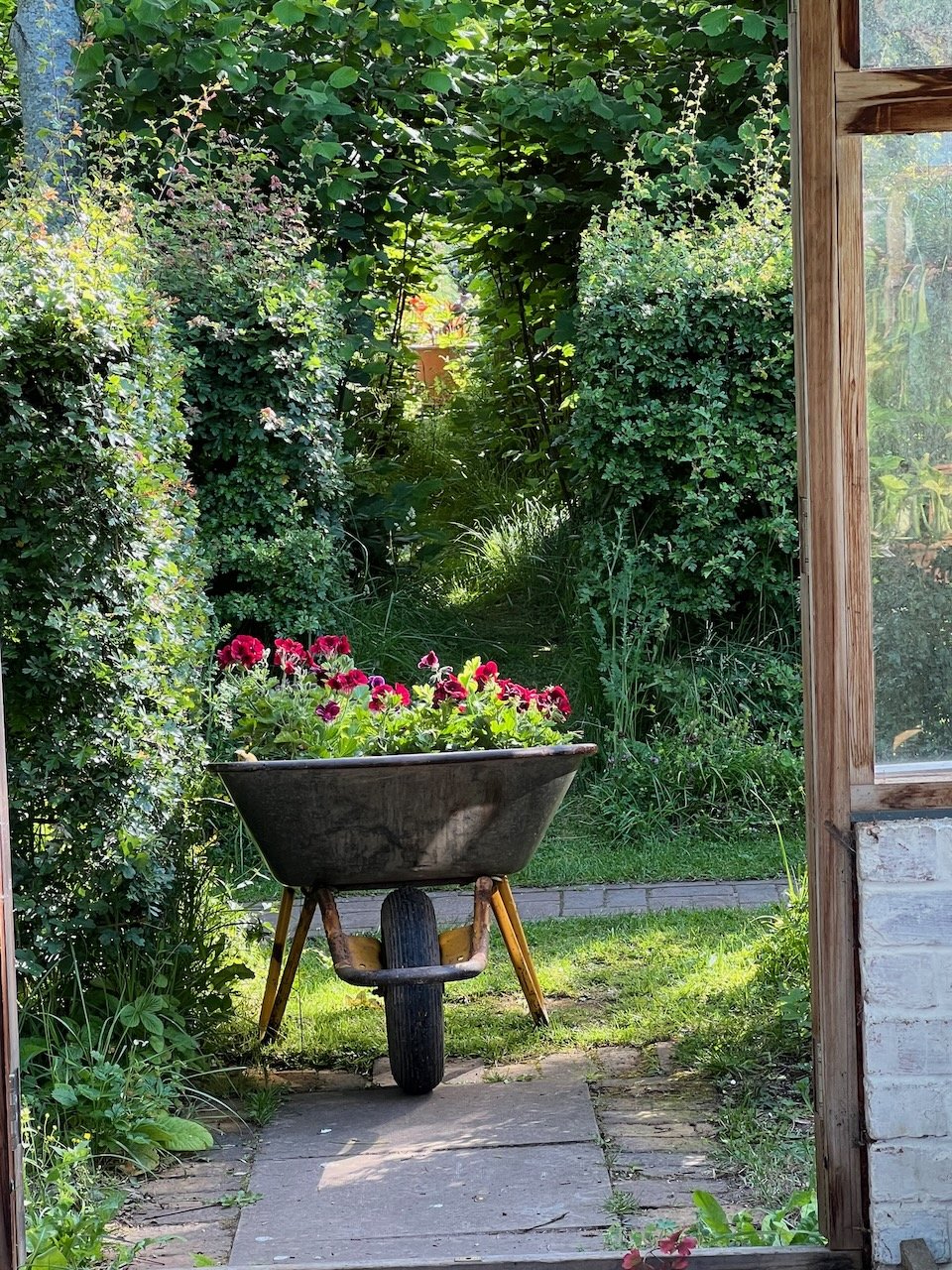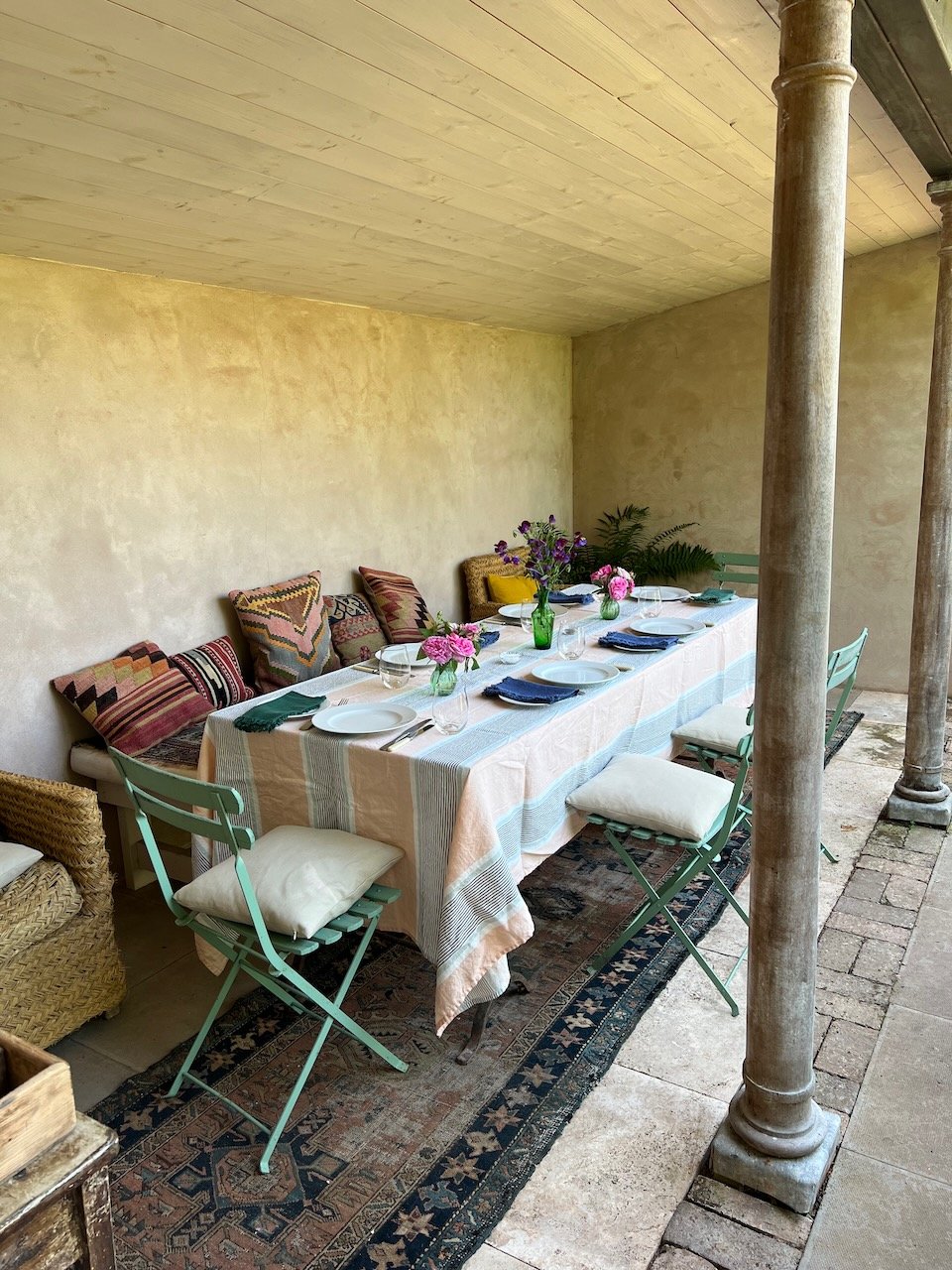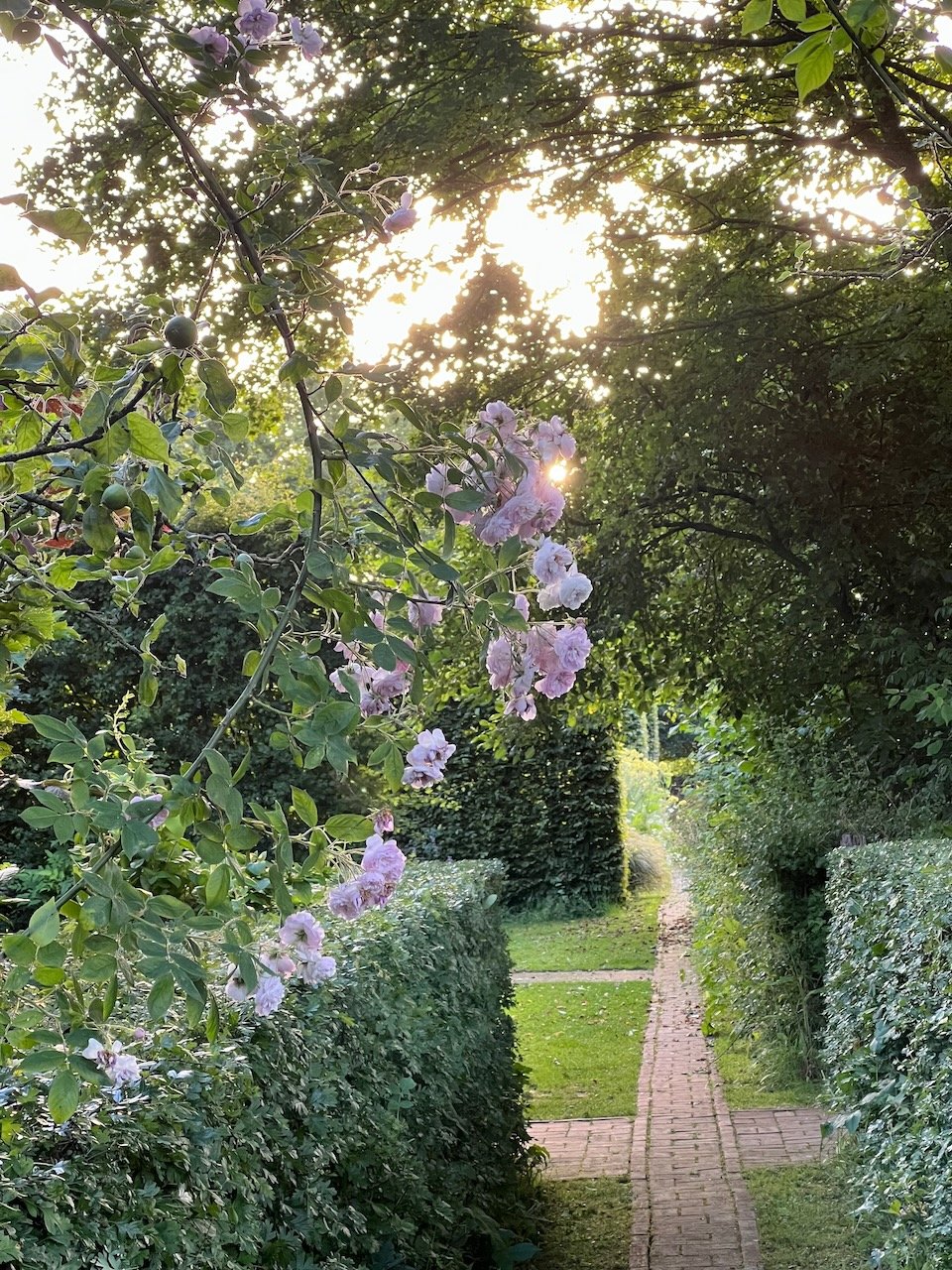June 2023
As the clock slips past midnight on May 31st the garden and I have arrived where we most need to be. There is much change and development to come and the beginning of June is a very different place to the dog days of late July and August but nevertheless there sense of arrival at summer is undeniable yet has the freshness and inner glow of spring.
Nothing is jaded. The days are long and light with dawn just after 4 in the morning and the light remaining until well after 10 at night. The weather is varied - this is England after all - but somehow that does not matter. Even the rainy, grey days are beautiful. The British garden – and countryside - is at its very best and I adore every second of it.
Amidst the glowing green colour arrives like a carnival. There are Oriental poppies with huge orange blooms, Bearded Irises topped with some of the richest colours in the whole floral world, large-flowering clematis and, as the month unfurls, roses of every shade of pink, white, red and yellow.
I am sure that the secret of June is that it is not the peak of the gardens year or aspirations. The vegetable garden is still surprisingly empty at the start of the month and although a June border is always lovely, it never has the range of plants or colours that come along later in summer. But so much is still promised that the fact that the garden is brimming over with beauty and sensual delight.
June Jobs
Greenhouse/Allotment
The vegetable garden is coming out of the ‘Hungry Gap’ - that period between the last of the winter crops and the first of summer’s harvest but there is still time to start a vegetable garden from scratch although there should be some urgency to do so.
Tomato plants, courgettes, squashes, runner beans and sweetcorn can all be planted outside now the nights are warming up and aubergines, peppers, melons, cucumbers and more tomatoes grown in a greenhouse.
It is important to keep a succession of lettuce going this month making small sowings every two or three weeks to ensure a steady supply of fresh salad leaves.
Regularly pinch out side-shoots on tomatoes. It is best - and easiest - to do this first thing in the morning when the plant is turgid and they will snap off easily in your fingers.
Weeds
June is a month when weeds really kick into action so all vegetable plots need regular weeding and nothing beats a hoe for this. The secret of effective hoing is to always do it in dry weather and preferably in the morning so that the weeds will cut cleanly from the soil and then dry out and die during the day. They can then be raked up in the afternoon and taken to the compost heap.
Thin Apples, Pears & Desert Grapes To Ensure Good Sized Fruit
If your apple or pear trees suddenly deposit hundreds of small fruits on the ground you might feel something is going horribly wrong but this is perfectly normal and known as the ‘June Drop’. The tree is just reducing the quantity of fruit they carry in order to successfully ripen those that remain. However it is indiscriminate about which fruit it lets go, so it is a good idea to selectively remove the smallest fruit at this time of year before the tree does it for you.
Reduce each cluster on a spur to just two fruits that are not touching each other. Not only will these grow and ripen better as a result but also the risk of damaging the branches by the weight of the fruit later in the year is greatly reduced. With all fruit that is to be eaten rather than juiced, quality is much more important than quantity. You can always buy average apples but if you grow them yourself then you should always aim for them to be as good as possible.
Dead-Head Roses To Prolong Flowering
Dead-heading roses is really worth doing at least once a week- and preferably daily - in mid summer.
When you dead-head you are effectively pruning and thus stimulating fresh side shoots which will bear new flower buds and therefore extend the flowering season. Dead-heading also stops the plant developing seed and so increases the chance of repeat flowering as seed always takes precedence from the plant’s supplies of nutrients and water.
Just pulling off the old flower heads will help but by far the best approach is to use a pair of secateurs and to cut back to the first leaf below the spent flower. A new shoot will then grow from this point.
Of course some roses, especially the species bushes, have glorious hips in autumn and these will only develop if the flowers are allowed to set seed and fruit., so enjoy the flowers as long as they last and then wait for the autumnal display that they will produce from their fruit.
Prune Wisteria Cutting Back All New Growth To Six Inches
Wisteria produces its flowers on new growth, which in turn emerges from spurs off the main shoots. When they have finished flowering - and for most of us that is around the middle of June - is the best time to prune all this years new shoots back to a spur leaving no more than about about 6 inches of growth. In the process the whole plant can be tidied, trained and tied in so that there are no loose, trailing shoots.
If there is any doubt about how hard to prune err on the side of cutting too lightly and then in the the new year, when the foliage has all died back, you can prune again, reducing each side shoot to just 2 or 3 inches.
Prune Early Flowering Shrubs
The Spring flowering shrubs such as Philadelphus, Amelanchier, Deutzia, Weigelia and Rubus all produce their flowers on shoots grown the previous summer so should be pruned now. This will give the new growth plenty of time to ripen before winter and thus bear maximum flowers next Spring.
Mature shrubs should be pruned hard, cutting back most of the flowering stems to a healthy new shoot and taking the oldest growth (but no more than a third or quarter of the plant) right back to the base so it is completely renewed every three or four years. A very overgrown shrub should be renewed in this gradual manner too. Young shrubs should have the weakest growth cut back with the remainder pruned just to shape and size.
Weed, water and mulch with compost after pruning is done and take semi ripe cuttings from healthy, straight non-flowering pruned stems.
Trimming Verticals
It is amazing how forgiving the eye is of the broad expanses of hedge, grass, border or anything really, as long as the edges, in any direction, are suitably straight and clean cut. It is too early to cut hedges because not all young birds have left the nest, but you can cut all entrances and exits and vertical planes in gaps in hedges to crisp them up and whilst this is quick and easy to do and clear up, it can transform the garden. Then, in a month’s time, all the hedges can have a proper trim and your edges, which by then will have become a little fuzzy again, can have their second cut.
Trim Box Hedges
Until 10 years ago Box hedges and topiary were almost ubiquitous in British gardens. But the combination of box blight and box moth caterpillar have made one of the stalwarts of the garden look very much under threat and it may be that fewer and fewer of us can successfully grow box at all.
However if you do then early June is the best time to give it a trim. Always use really sharp shears or hedge trimmer as this will avoid burning and tearing the cut edges which makes them turn brown.
Also always do this job when you know that you are going to have a few days of dry weather as the cut leaves and stems are extra susceptible to the box blight fungus when the wounds are fresh. Dry weather will stop the spores being active and allow time for the wounds to quickly scar over and become less vulnerable.
Grass Cutting
By June a million gardens are regularly humming - and at times unpleasantly roaring - with the sound of motor- mowers keeping the grass trim and under control. But at Longmeadow we restrict this to paths and try and let as much grass as possible grow long and planted up with spring bulbs and wildflowers. This looks beautiful and is so much better for insects and all forms of wildlife than a neatly mown lawn.
However it is important to time the cutting of this long grass to maximise the performance of the bulbs next spring and of the grasses themselves. Nothing should be cut at all until after the longest day on June 21st. This gives the foliage of the bulbs time to die back and feed next year’s bulb and subsequent flowering. The grass can then be cut if it as been hot and dry although sometimes I leave this as late as mid August.
Whenever you make this first cut of the long grass, you must collect it all up and take it to the compost heap to stop it adding nutrition to the ground which would encourage lusher, coarser grasses at the expense of the flowers.
Sow Biennials
Biennials, such as Wallflowers, Honesty, Foxgloves, Forget-me-nots and Aquilegias differ from annuals, which grow, flower and set seed all in one growing season, in that they grow fast from seed and develop strong roots and foliage in one season and then flower in the next. For most this means that they germinate and grow without flowering in summer and autumn, remaining dormant over winter, then have another burst of growth before flowering in Spring and early summer.
Sow them now in a seed tray, pots or in rows in the vegetable plot and prick them out into pots or thin so that each plant can develop healthy roots and foliage before planting them out where you want them to grow in autumn.
Plant Out Tender Annuals
All through April and May we have been growing on, nurturing protecting and increasingly hardening off tender plants such as Cannas, dahlias and salvias as well as tender annuals like tithonias, cosmos and Zinnias, all of which play such an important role in the late summer borders. By June we can plant them out with confidence that they will not only be free from any risk of frost but also that the nights will be warm enough for them to grow strongly and establish as good sized plants ready for their flowering display.


